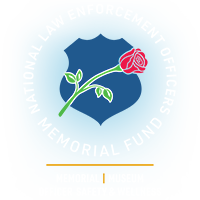“The members of this Association have been furnished with a new means of knowing each other by the issuance of an Association monogram including the letters ‘I.A.C.’ and the word ‘Police.'”– Major Richard Sylvester, president of the IACP in 1903.
In 1893, the World’s Columbian Exposition was held in Chicago to celebrate the 400th anniversary of the arrival of Christopher Columbus in the New World. Commonly referred to as the Chicago World’s Fair, the event was a celebration of debuts, including the first Ferris wheel, phosphorescent lamps, Juicy Fruit gum, and the hamburger.

Webber Seavey, Omaha (NE) Police Chief
The World’s Fair also marked another historic event, as it coincided with a conference that for the first time, unified police chiefs from across the country. Omaha (NE) Police Chief Webber Seavey organized the event, aimed at standardizing law enforcement practices and training. Hoping to entice police chiefs with the festivities of the World’s Fair, Chief Seavey sent out 385 invitations to the heads of the country’s largest police departments.
51 police chiefs showed up for the meeting. One attendee said the small turnout only served to demonstrate the need for a cooperative spirit among police departments. Despite their small number, the police chiefs at the first meeting sprang into action. They elected Chief Seavey as president and Grand Rapids (MI) Chief Harvey Carr as secretary/treasurer of their newly formed organization which they named the National Union of Chiefs of Police of the United States and Canada. The organization would later become the International Association of Chiefs of Police (IACP).
The police chiefs’ enthusiasm caught on. By their meeting the following year, the organization had 113 members. They adopted a resolution calling on the House of Representatives and the Department of Justice to create a national bureau for identifying criminals and disseminating information about them. When a national bureau failed to materialize, the police chiefs decided to create their own National Bureau of Identification (NBI) in Chicago.
Police departments had to pay a membership fee to access the bureau’s information, but with its in-house expert in identification procedures and access to Bertillon measurements, photographs and information about criminals, the NBI quickly became an important resource. The NBI later moved its headquarters from Chicago to Washington, DC, and ultimately helped lead to creation of the FBI Identification Division and the Uniform Crime Records system.
Today, more than 100 years after that first meeting in Chicago, the IACP has more than 30,000 members and is credited with bringing a new level of professionalism to the law enforcement field, from recruitment and standardized training programs to on-the-job performance and conduct. Police chiefs are given the distinguished IACP insignia pin as part of their membership.

